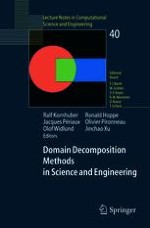Domain decomposition is an active, interdisciplinary research area that is devoted to the development, analysis and implementation of coupling and decoupling strategies in mathematics, computational science, engineering and industry. A series of international conferences starting in 1987 set the stage for the presentation of many meanwhile classical results on substructuring, block iterative methods, parallel and distributed high performance computing etc. This volume contains a selection from the papers presented at the 15th International Domain Decomposition Conference held in Berlin, Germany, July 17-25, 2003 by the world's leading experts in the field. Its special focus has been on numerical analysis, computational issues,complex heterogeneous problems, industrial problems, and software development.
